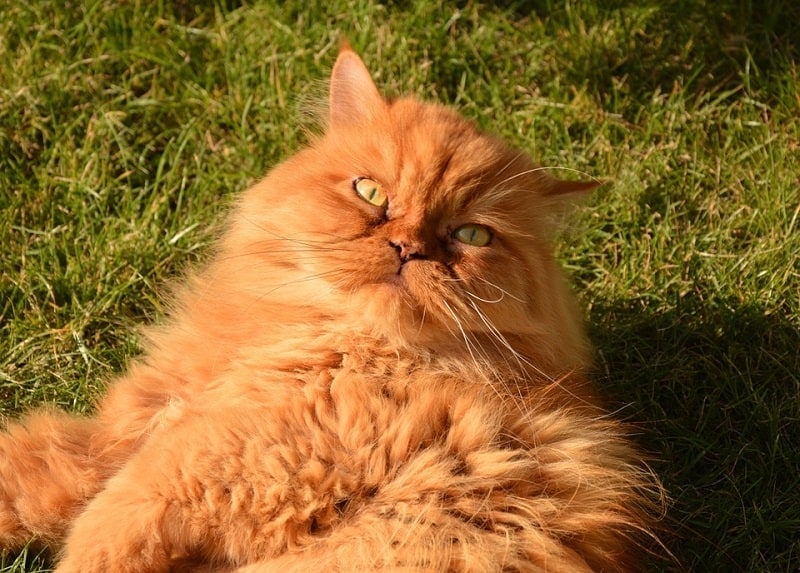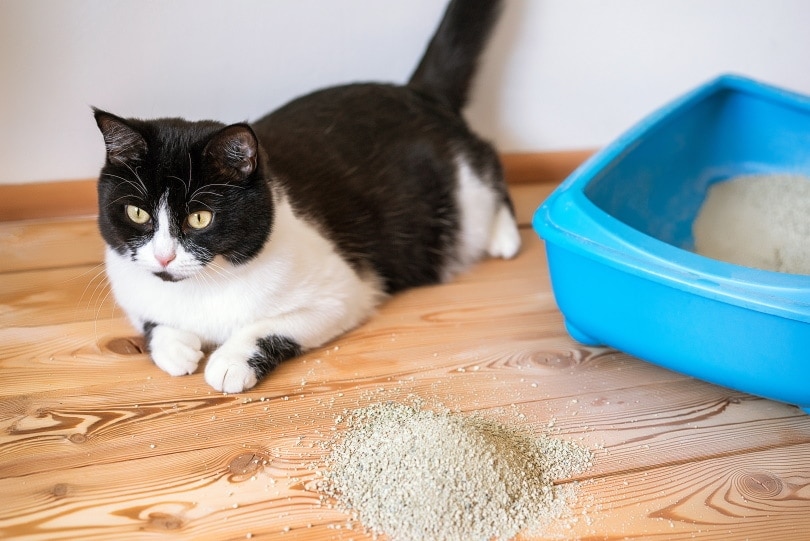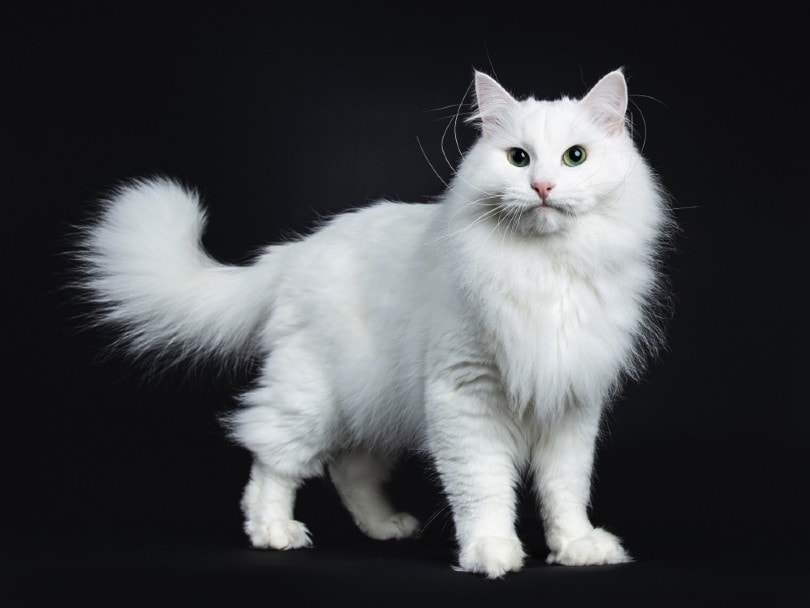How Many Hearts Does a Cat Have? Vet-Reviewed Facts & Tips
By Ashley Bates
Updated on
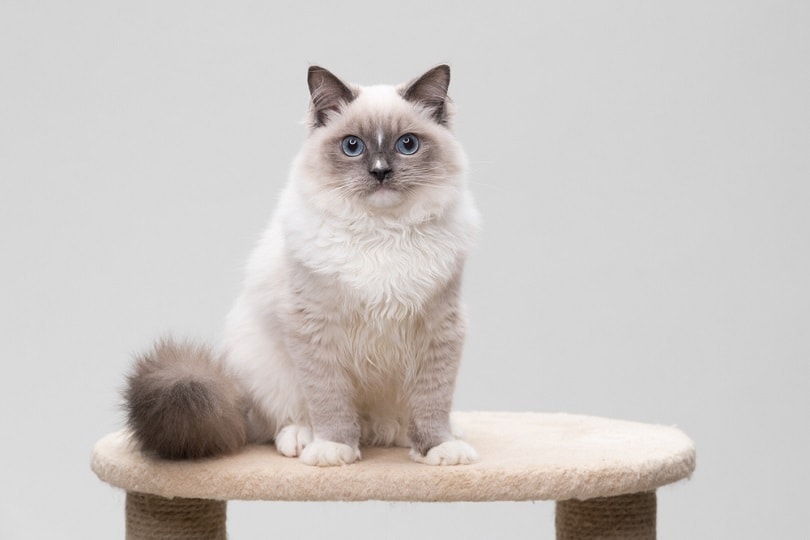
You may know that certain animals can have more than one heart—octopus, squid, and hagfish, for example. They need their extra hearts for various reasons. So, what about our feline friends? Do they have more than one heart?
The answer is no. Cats only have one heart to pump blood throughout their bodies. Still, let’s get into the details of how the feline heart functions.
Cat Cardiology
A cat has only one heart.1 Within that heart are four separate chambers. The upper chambers of the heart are called the left and right atria. The two lower chambers are called the left and right ventricles.
A cat’s cardiovascular system includes the heart, veins, and arteries that aid in its function.2 The right side of the heart is responsible for pumping deoxygenated blood to the lungs, and the left pumps oxygen-rich blood to the body after it has returned from the lungs.
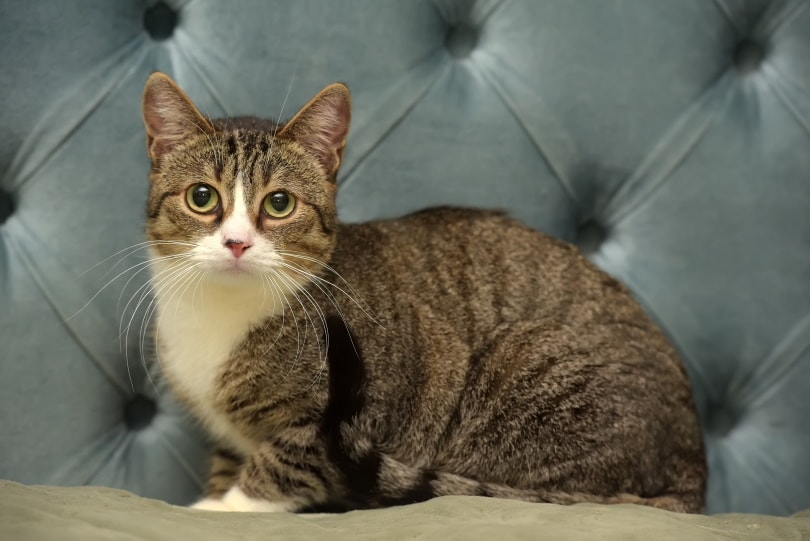
Cat Heart Valves
The valves in the heart have a primary function of one-way blood flow. They’re basically navigational systems, directing the blood exactly where it needs to be. Each valve has a particular purpose.
Atrioventricular Valves
Atrioventricular valves are located between the atria and ventricles.3 These valves close to prevent any blood from flowing back into the atria. The left and right atrioventricular valves are also known as the mitral and tricuspid valves
Semilunar Valves
The semilunar valves, also called the aortic and pulmonary valves, are located between the heart ventricles and two major vessels.6
Cat Heartbeats
Hearts beat because tiny electrical currents are conducted rhythmically across the heart muscle. When your cat’s heart beats, it beats in two phases: diastole and systole. Diastole is the phase where the heart muscle relaxes and enables the ventricles to fill with blood. It is accompanied by the sound of the mitral and tricuspid valves closing as the phase ends. Systole is when the ventricles contract and blood moves around the body. The end of the phase is accompanied by the sound of the aortic and pulmonary valves closing.
The heart beats at different rates depending on the state of the body. When the body moves faster, it causes the heart to pump harder and faster to make up for the extra oxygen demands. The heart rate is paced out by electrical conduction from the sinoatrial node, resulting in the contraction of the atria. The electrical conduction to the rest of the heart is continued through the atrioventricular node, resulting in the coordination and contraction of the ventricles.
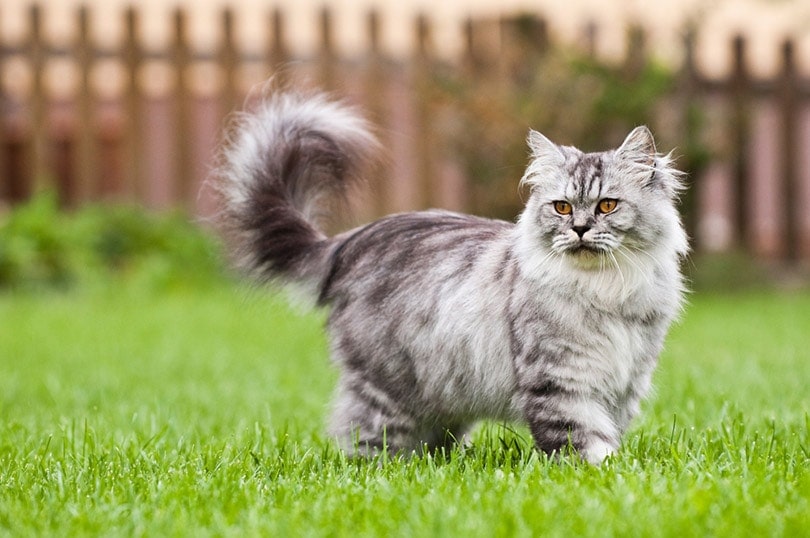
Heart Rate
A cat resting has a heart rate averaging 120 to 140 beats per minute. Kittens can have faster heart rates, sometimes averaging between 200 and 260 beats per minute.
Pulse
A pulse is what you feel on the outside of the body as blood is pushed around. It is a rhythmic beat felt in the neck at the jugular vein and should be the same as the heart rate.
Heart Problems in Cats
Heart problems are less commonly diagnosed in cats than dogs, but they are a concern for some. There are both acquired and congenital diseases.
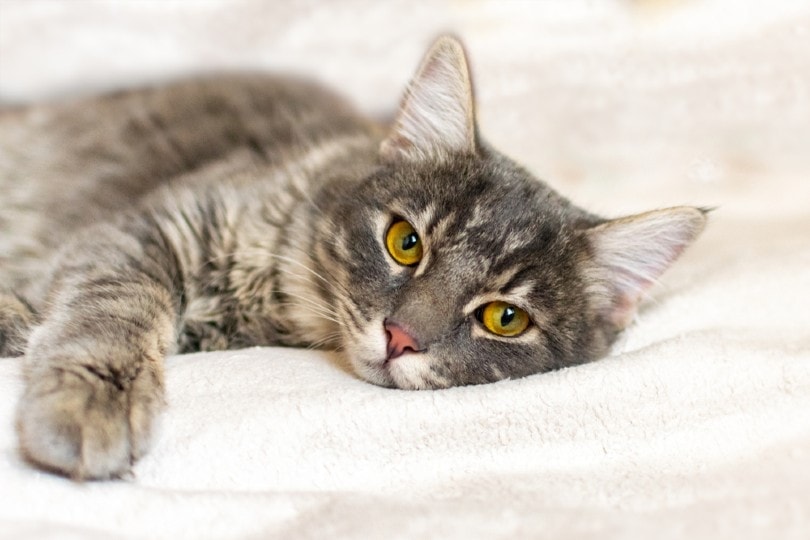
What Causes Heart Disease in Cats?
This depends on the type of heart disease and the exact causes for all types are still under investigation. Many are linked to age, genetics, weight, physical activity, and diet.
Signs of Heart Problems in Cats
Many cats do not show outward signs of heart problems in the early stages, but you should watch out for:
- Chronic cough
- Lethargy
- Labored breathing
- Collapsing
- Paralysis of hindquarters
If you believe that your cat could be exhibiting signs of a heart issue, it’s essential to seek medical advice from your trusted veterinarian.
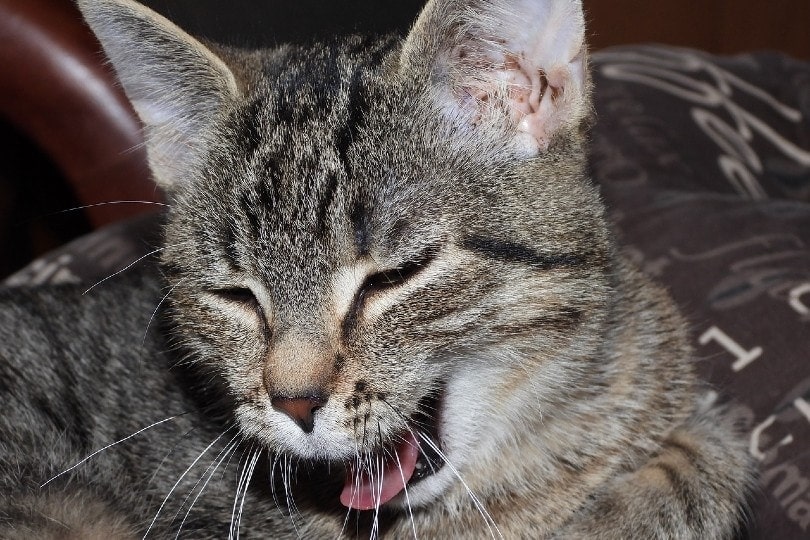
Acquired Heart Diseases
Acquired heart diseases are those that develop with time during a cat’s life, ones they are not born with. These include cardiomyopathies, degenerative valve disease, and high blood pressure.
Cardiomyopathies
Cardiomyopathies are the most common types of heart health issues in cats. Cardiomyopathy is a term used to describe a disease of the heart muscle.
- Hypertrophic cardiomyopathy
- Dilated cardiomyopathy
- Intermediate cardiomyopathy
- Restrictive cardiomyopathy
Cardiomyopathies can be quite challenging to notice at home because cats often decrease their activity level to accommodate their disease. Once you notice the signs, it’s likely in a more advanced stage. Consequences associated with cardiomyopathies include heart failure and thromboembolic disease (blood clots).
Not all causes of the different cardiomyopathies are known, but the ones that we do know about include hyperthyroidism, hypertension, taurine deficiency from poor diets, genetics in some breeds, toxins, and a cancer called lymphoma.
Valve Dysfunction
Degenerative valve disease usually affects the mitral valve in cats but is not common. It results in a leaky mitral valve, enabling some blood to flow in the wrong direction and causing changes to the heart chambers.
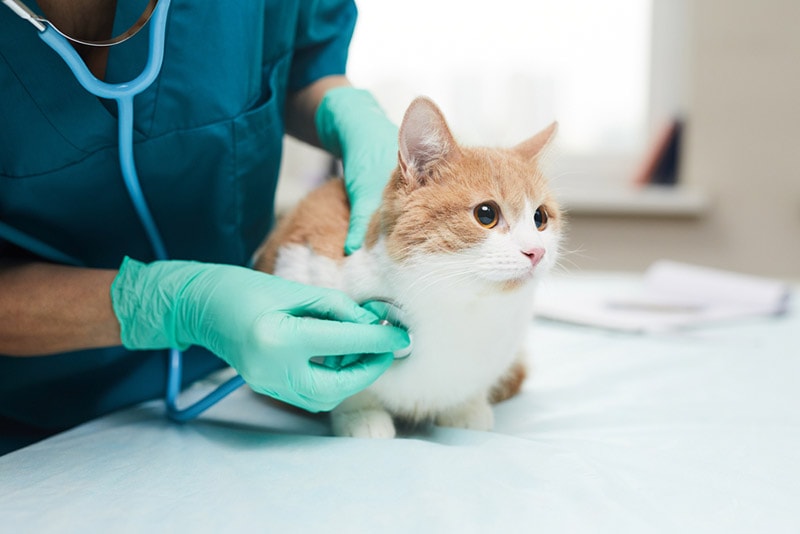
Congenital Heart Disease
Congenital heart disease is the type that forms while the kitten is developing in the uterus. The result is one of a number of malformed structures of the heart. It is a common type of congenital disability. Sometimes these conditions require surgery. These are relatively rare, though accounting for only 1% to 2% of kittens.
Ventricular Septal Defects
Ventricular septal defects are moderately common in cats and are an example of congenital disease. This disorder occurs because of a defect in the wall separating the ventricles, the interventricular septum. The condition might cause a loud systolic murmur.
Cats with this condition have varying degrees of problems, depending on the exact size and location of the deficit. The hole enables blood to pass between the ventricles, which should not normally happen.
These defects are not usually serious and have a good prognosis; long-term survival is possible.
Inherited Heart Disease
Certain heart conditions can be breed specific.
- Maine Coons — Hypertrophic cardiomyopathy
- Persians — Hypertrophic cardiomyopathy
- American/British Shorthairs — Hypertrophic cardiomyopathy
- Siamese — Patent ductus arteriosus
Importance of Routine Vetting for Heart Health
Nothing gets you ahead of the game more than routine vetting when it comes to heart issues. Often, there are no outward signs of a heart problem in a cat, especially in the early stages. However, your vet may be able to hear heart murmurs, or extra heart sounds, or measure high blood pressure before you notice any problems at home. This shows the importance of at least annual health checks.
During your kitten’s first year of life, they will get to know their vet quite well. They will go in for routine check-ups, growth monitoring, vaccinations, and spay and neuter surgery in that time. Congenital heart problems are usually picked up in this first year of life.
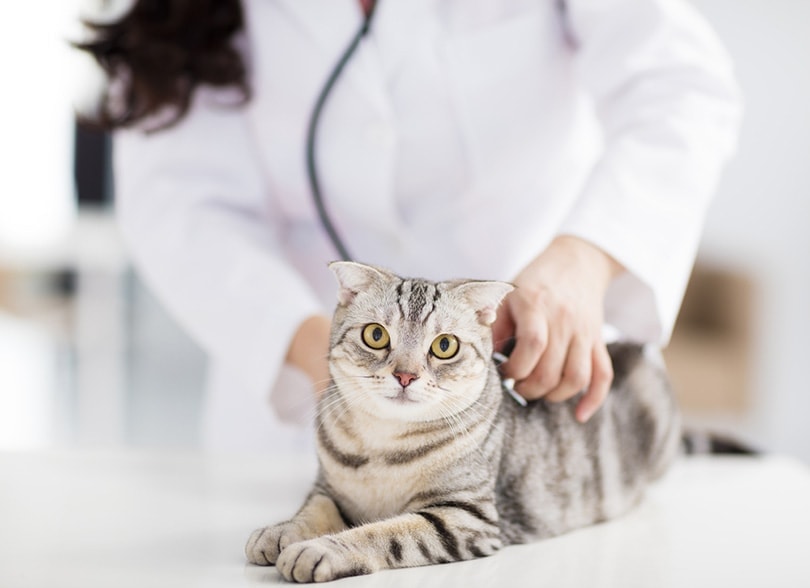
Tips to Keep Your Cat’s Heart Healthy
You can always do your part to prevent heart disease to the best of your ability. Here are five ways you can keep your kitty’s ticker in top-notch shape.
- Provide adequate nutrition. Your kitty is a carnivore that needs lots of protein, fatty acids, taurine, vitamins, and minerals. Cats cannot make taurine, so it is termed an essential amino acid for them. Taurine deficiency from homemade or incomplete commercial foods can result in heart disease.
- Attend routine checkups. Always make sure that your kitty receives regular veterinary care, and prepare for the unexpected. Consider a rainy-day fund or pet insurance to cover emergencies.
- Offer supplements. There are tons of terrific supplements on the market that target heart health. These come in powder, pill, and treat forms. They usually contain vitamins B and E, taurine, and omega fatty acids.
- Monitor sleep schedule. On average, a cat should sleep at least 12 to 16 hours per day. If your cat seems increasingly lethargic, get them checked out at the vet.
- Ensure that your cat gets enough exercise. After cats get fixed and start aging, their activity levels can decrease drastically, but if they’re still eating the same amount or more, they can start packing on extra pounds. Ensure that your cat is at a healthy weight and gets exercise each day.
Conclusion
So, now you know that cats have one very valuable heart that enables them to function excellently. Like us, cats have four chambers in their heart that each serve a different function, working together to keep the blood flowing around the body.
If you think your cat is exhibiting any signs of potential heart problems, take them to your vet right away for further evaluation.
See also:
Featured Image Credit: izmargad, Shutterstock



